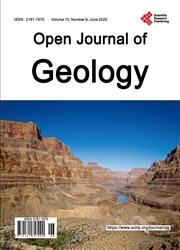On Dinosaur Reconstruction: Posture of Dinosaurs
引用次数: 1
Abstract
Dinosaurs due to their diverse species and peculiar forms have drawn the interest of both artists and scientists. One way to unlock the unknown life of dinosaurs is to reconstruct dinosaurs through drawings, computer anima-tions or sculptures. Following the Introduction on “Dinosaur Reconstruc-tion” by the present authors, where important Paleontological knowledge was presented, the next step is to examine some specific information along with necessary details for dinosaur reconstruction. The first and basic step to be taken for a reconstruction is the posture of the animal; this is the theme of the current paper. Dinosaurs would move either bipedally or quadrupedally de-pending on their kind and body construction. Based on the available literature, various issues in relation to the posture of an animal at different in-stances are examined. These are: postures of bipedal dinosaurs during walking, observation of living bipedal animals, postures of quadruped dinosaurs during walking, feeding styles, and dinosaur tails. Theropods had a locomotor behavior like modern birds, with the step width increasing when the animals decreased speed. The general posture and movement of quadrupeds and especially sauropods, remains a subject of great and much controversy. Some scientists believe that sauropod necks were generally held in a neutral or undeflected state during most of the time, while others believe that sauropod necks behaved like all present-day amniote with the mid-cervical region held nearly vertical. Also, there are indications that dinosaurs usually held their tails above ground. For all dinosaurs, the long tail was acting as a counterbalance to the head and body. As a validating example, the case of Amargasaurus is investigated with the help of a model, where the various positions of the animal are examined. A certain posture was chosen for a full-size steel and concrete reconstruction based on the features of the animal.恐龙重建:恐龙的姿势
恐龙因其种类繁多、形态奇特而引起了艺术家和科学家的兴趣。揭开恐龙未知生活的一种方法是通过绘画、电脑动画或雕塑来重建恐龙。在作者介绍了重要的古生物学知识之后,下一步是研究一些特定的信息以及恐龙重建的必要细节。重建的第一步也是最基本的一步是动物的姿势;这是本文的主题。恐龙会用两足或四足行走,这取决于它们的种类和身体结构。在现有文献的基础上,研究了不同情况下动物姿势的各种问题。它们是:两足恐龙行走时的姿势,观察现存的两足动物,四足恐龙行走时的姿势,进食方式,恐龙尾巴。兽脚亚目恐龙有像现代鸟类一样的运动行为,当动物减速时,步宽会增加。四足动物,尤其是蜥脚类动物的一般姿势和运动,仍然是一个有很大争议的话题。一些科学家认为,蜥脚类恐龙的脖子在大部分时间里通常保持中立或不偏斜的状态,而另一些科学家则认为,蜥脚类恐龙的脖子表现得像所有现代羊膜动物一样,颈部中部几乎是垂直的。此外,有迹象表明恐龙通常把尾巴举到地面上。对所有恐龙来说,长尾巴都是头部和身体的平衡。作为一个验证的例子,阿玛龙的案例是在模型的帮助下研究的,在模型中,动物的不同位置被检查。根据动物的特征,选择了一定的姿势进行全尺寸的钢铁和混凝土重建。
本文章由计算机程序翻译,如有差异,请以英文原文为准。
求助全文
约1分钟内获得全文
求助全文

 求助内容:
求助内容: 应助结果提醒方式:
应助结果提醒方式:


